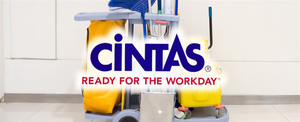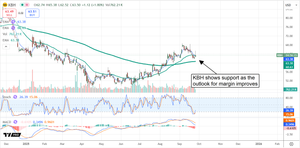
Personalized clothing company Stitch Fix (NASDAQ: SFIX) beat Wall Street’s revenue expectations in Q2 CY2025, but sales fell by 2.6% year on year to $311.2 million. On top of that, next quarter’s revenue guidance ($335.5 million at the midpoint) was surprisingly good and 13.1% above what analysts were expecting. Its GAAP loss of $0.07 per share was 29% above analysts’ consensus estimates.
Is now the time to buy SFIX? Find out in our full research report (it’s free).
Stitch Fix (SFIX) Q2 CY2025 Highlights:
- Revenue: $311.2 million vs analyst estimates of $304 million (2.6% year-on-year decline, 2.4% beat)
- EPS (GAAP): -$0.07 vs analyst estimates of -$0.10 (29% beat)
- Adjusted EBITDA: -$4.36 million vs analyst estimates of $6.73 million (-1.4% margin, significant miss)
- Revenue Guidance for Q3 CY2025 is $335.5 million at the midpoint, above analyst estimates of $296.7 million
- EBITDA guidance for the upcoming financial year 2026 is $37.5 million at the midpoint, below analyst estimates of $43.1 million
- Operating Margin: -3.6%, up from -13.1% in the same quarter last year
- Active Clients: 2.31 million, down 199,000 year on year
- Market Capitalization: $735.9 million
StockStory’s Take
Stitch Fix’s second quarter results drew a negative market reaction, with shares falling sharply after the report. Management attributed quarterly performance to continued progress in its transformation strategy, highlighting improvements in client experience and assortment, particularly the strength in its men’s business and expansion into non-apparel categories. CEO Matt Baer emphasized that both women’s and men’s lines saw accelerated revenue growth, driven by higher average order values and the addition of recognized brands. The company also noted that improvements in retention and client engagement led to year-over-year growth in revenue per active client for the sixth consecutive quarter, but active client numbers continued to decline.
Looking to the next quarter and beyond, Stitch Fix’s guidance is shaped by expectations of further revenue growth and ongoing investments in personalization, technology, and assortment. Management believes that the rollout of generative AI features, enhancements to the stylist-client relationship, and increased flexibility for customers—such as Family Accounts and larger Fixes—will contribute to improved client acquisition and retention. CFO David Aufderhaar cautioned that, while the company projects gross margins to remain stable, higher transportation costs and disciplined growth investments could impact profitability as they aim to drive sustainable, positive free cash flow.
Key Insights from Management’s Remarks
Management attributed the quarter’s results to stronger average order values, expanded assortment, and operational efficiencies, despite continued declines in active clients.
- Men’s business momentum: Double-digit growth in the men’s line was a standout, attributed to expansion into footwear and athleisure, as well as partnerships with established brands like Adidas and Tommy Bahama. Management noted this segment delivered a full year of positive revenue comps, offsetting broader client declines.
- Assortment and brand expansion: The addition of over 50 new brands—including Varley, Favorite Daughter, and Abercrombie Kids—drove higher engagement and order values. CEO Matt Baer highlighted growing demand for footwear (up over 35% in the women’s segment) and strong trends in denim, skirts, and athleisure.
- Operational cost discipline: The company continued to rationalize its cost structure, reducing SG&A expenses by $124 million year over year. Efforts included optimizing the warehouse network, reducing corporate headcount, and focusing marketing spend on the most effective channels.
- Higher AOV and retention: Average order value rose for the eighth consecutive quarter, with improvements in retention and engagement reflected in rising revenue per active client. Management pointed to a strategic focus on acquiring more “high-LTV” (lifetime value) clients and increased recurring shipments.
- Limited tariff impact: Despite ongoing concerns about tariffs, management stated that mitigation efforts, including supplier negotiations and diversified sourcing, resulted in minimal direct impact on average order value or gross margin this quarter.
Drivers of Future Performance
Stitch Fix expects technology-driven personalization, assortment expansion, and targeted marketing to drive revenue growth, while ongoing cost pressures may limit margin improvement.
- AI-powered personalization: Management is investing in generative AI to enhance the client experience, including an AI style assistant and style visualization tools. These features are intended to help clients articulate preferences and see personalized outfits, enabling stylists to deliver more tailored recommendations and potentially higher order values.
- Assortment and flexibility initiatives: The company is expanding flexibility for clients through Family Accounts and themed Fixes, aiming to boost engagement and unlock new gifting opportunities. Management believes these offerings will help stabilize and grow the active client base, especially during peak seasons like holidays.
- Margin management challenges: Although the company expects modest gross margin stability, management flagged rising transportation costs and increased advertising spend as headwinds. The company’s plan to shift compensation from equity to cash could also impact adjusted EBITDA, with a positive trade-off for net income.
Catalysts in Upcoming Quarters
Going forward, the StockStory team will monitor (1) whether new AI-powered features and platforms like Stylist Connect lead to improved client retention and engagement, (2) the impact of expanded assortment and Family Accounts on active client growth, and (3) the company’s ability to maintain gross margins amid rising transportation costs and ongoing investments. Results from holiday promotional activity and further brand partnerships will also be important signposts.
Stitch Fix currently trades at $5.11, down from $5.64 just before the earnings. Is there an opportunity in the stock?The answer lies in our full research report (it’s free).
Stocks That Trumped Tariffs
Donald Trump’s April 2025 "Liberation Day" tariffs sent markets into a tailspin, but stocks have since rebounded strongly, proving that knee-jerk reactions often create the best buying opportunities.
The smart money is already positioning for the next leg up. Don’t miss out on the recovery - check out our Top 6 Stocks for this week. This is a curated list of our High Quality stocks that have generated a market-beating return of 183% over the last five years (as of March 31st 2025).
Stocks that made our list in 2020 include now familiar names such as Nvidia (+1,545% between March 2020 and March 2025) as well as under-the-radar businesses like the once-small-cap company Exlservice (+354% five-year return). Find your next big winner with StockStory today.
StockStory is growing and hiring equity analyst and marketing roles. Are you a 0 to 1 builder passionate about the markets and AI? See the open roles here.






